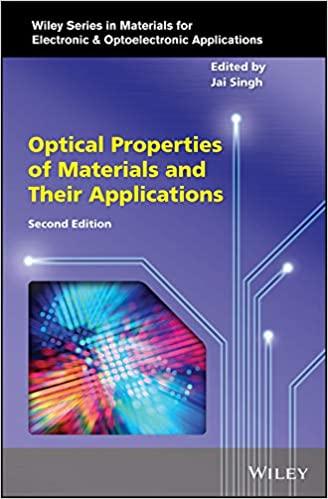Hi, I need help with this electron diffraction experiment. I've gotten the results of the experiment as below and need to figure out an equation for d (spacing between the planes of the carbon atoms (nm)) using the gradient of the graphs below. I really stuck on the equation aspect as the desired answer is 1.4nm however whenever I attempt to implement the slope of the graph I don't get that answer. I've also attempted changing all units to SI but it still doesn't get me the answer.
THE POWER SUPPLY VS RADIUS OF THE INNER DIFFRACTION Inner Diffraction Diameter (mm) Inner Radius Radius (mm) Outer Diffraction Diameter (mm) Outer Diffraction Radius (mm) Radius (mm) = Diameter/2 Uncertainty = (Diffraction Inner Radius - Diffraction Outer Radius)/2 Diffraction Diameter (mm) 39.27 19.635 Power Supply (KV) 38.24 37.21 18.605 1.03 18.035 Gradient of Outer Radius 2 19.12 34.05 17.025 36.07 17.53 1.01 35.06 13.8 30.76 15.38 31.64317828 2.5 14.59 1.58 29.18 27.6 3 26.64 25.2 12.6 28.08 14.04 13.32 1.44 25.74 12.87 Gradient of Inner Radius 3.5 24.68 23.62 11.81 31.07631214 12.34 1.06 23.26 21.85 10.925 24.67 12.335 1.41 4.5 11.63 18.97 9.485 22.91 11.45 5 10.47 1.97 20.94 10.8 20.3 19 9.5 21.6 1.3 5.5 10.15 19.64 18.53 9.26 20.75 10.375 6 9.82 1.11 9.13 19.7 9.85 18.98 18.26 6.5 9.49 0.72 17.84 16.72 8.36 18.96 9.48 8.92 1.12 18.1 9 05 16.68 15.26 7.63 7.5 8.34 1.42 14.83 8.805 8 8.11 1.39 16.22 7.415 17.61 15.64 14.38 7.19 16.9 8.45 7 82 1.26 8.5 14.76 13.84 6.92 15.68 7.84 7.38 0.92 6.605 4.83 7.415 9 0.81 14.02 13.21 95 7 01 I+ 13.04 6.52 14.52 7.26 10 6.89 0.74 13.78 Radius (mm) = Diameter/2 vs Power Supply (KV) 20 15 10 Radius (mm) = Diameter/2 6 8 10 Power Supply (KV)1/sqrt(Power Supply) (KV) Radius (mm) = Diameter/2 Gradient 0.7071060781 19.12 Radius (mm) = Diameter/2 vs 1/sqrt(Power Supply) (KV) 31.3597 4521 0.632455532 17.53 25 0.5773502692 14.59 0.5345224838 13.32 20 0.5 12.34 0.4714045208 11.63 0.4472135955 10.47 15 0.4264014373 10.15 Radius (mm) = Diameter/2 0.4082482905 9.82 10 0.3922322703 9.49 0.377964473 8.92 5 0.3651483717 8.34 0.3535533906 8.11 0.3429971703 7.82 0 0.4 0.5 0.6 0.7 0.3333333333 7.38 0.3244428423 7.01 1/sqrt(Power Supply) (KV) 0.316227766 6.89THE POWER SUPPLY VS RADIUS OF THE OUTER DIFFRACTION Power Supply (KV) Radius (mm) = Diameter/2 Uncertainty = (Diffraction Inner Radius - Diffraction Outer Radius)/2 Diffraction Diameter (mm) Inner Diffraction Diameter (mm) Outer Diffraction Diameter (mm) 2 36.21 1.38 72.42 71.04 73.8 25 32.14 + 1.19 64.28 63.09 65.47 3 27.56 + 1.23 55.12 53.89 56.35 3.5 26.02 I+ 0.92 52.04 51.12 52.96 24.21 + 1.12 48.42 47.3 49.54 4.5 23.53 + 1.32 47.06 45.74 48.38 5 21.11 I+ 1.43 42.22 40.79 43.65 5.5 19.01 1.21 38.02 36.81 39.23 6 17.79 1.3 34.38 33.08 35.68 6.5 16.87 1.42 33.74 32.32 35.16 15.53 0.92 31.06 30.14 31.98 7.5 15.12 I+ It I+ It I+ 1 1.06 30.24 29.18 31.3 8 14.98 1.03 29.96 28.93 30.99 8.5 14.73 1.01 29.46 28.45 30.47 9 14.33 1.22 28.66 27.44 29.88 9.5 13.87 1.17 27.74 26.57 28.91 10 13.05 It 1.09 26.1 25.01 27.19 Radius (mm) = Diameter/2 vs Power Supply (KV) 40 30 20 Radius (mm) = Diameter/2 . 10 2 6 8 10 Power Supply (KV)1/sqrt(Power Supply) (KV) Radius (mm) = Diameter/2 0.7071060781 36.21 Radius (mm) = Diameter/2 vs 1/sqrt(Power Supply) (KV) GRADIENT 0.632455532 32.14 40 59.95633261 0.5773502692 27.56 0.5345224838 26.02 0.5 24.21 30 0.4714045208 23.53 0.4472135955 21.11 0.4264014373 19.01 20 Radius (mm) = Diameter/2 0.4082482905 17.79 0.3922322703 16.87 0.377964473 15.53 10 0.3651483717 15.12 0.3535533906 14.98 0.3429971703 14.73 0 0.4 0.5 0.6 0.7 0.3333333333 14.33 0.3244428423 13.87 1/sqrt(Power Supply) (KV) 0.316227766 13.05










